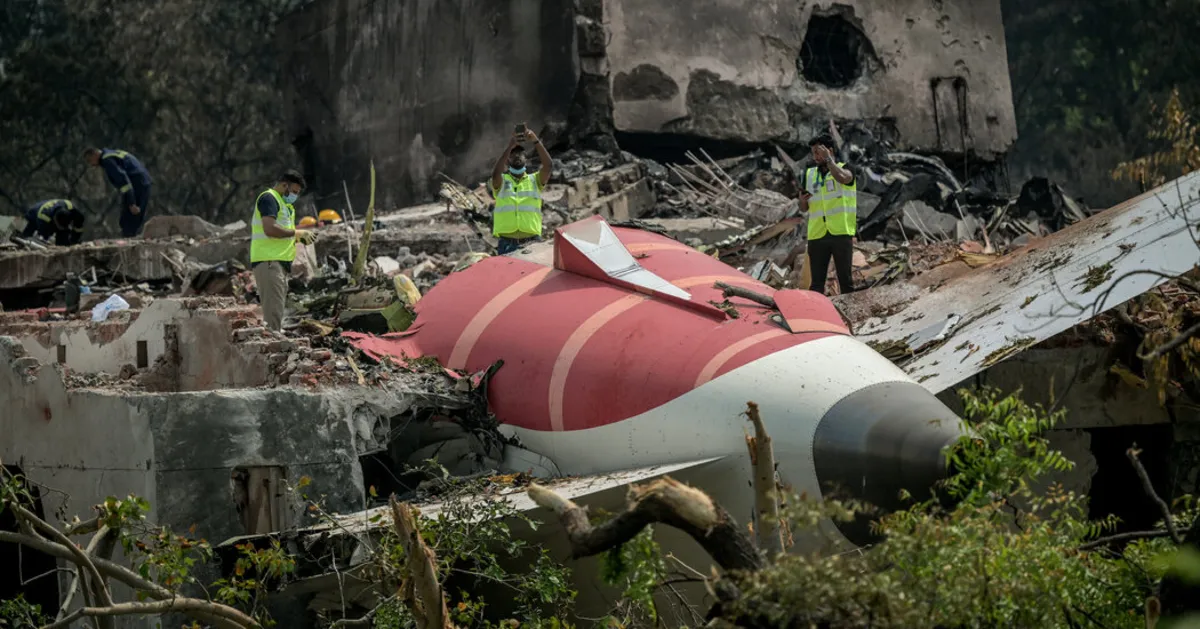
Indian authorities have announced the discovery of the flight data recorder from the recently crashed Air India plane, an incident that resulted in the tragic loss of hundreds of lives. As rescue teams continue to sift through the wreckage, this crucial piece of evidence will significantly aid in understanding the circumstances surrounding the aviation disaster.
The data extracted from an aircraft’s black boxes, which include both the flight data recorder and the cockpit voice recorder, is essential in aviation accident investigations. These devices provide critical information regarding flight parameters such as timing, altitude, and airspeed. “This marks an important step forward,” stated India’s Civil Aviation Minister, Ram Mohan Naidu Kinjarapu. “This will significantly aid the inquiry into the crash.”
In response to the crash, the Indian government has established a high-level investigative committee tasked with examining the factors that led to this tragic incident. The committee's primary focus will be on preventing and handling similar occurrences in the future, ensuring that safety measures are reinforced across the aviation sector.
Flight AI171, which was en route to London’s Gatwick Airport, crashed shortly after taking off from Ahmedabad in Gujarat. Out of the 242 individuals onboard, there was only one survivor. The impact of the crash also affected people on the ground, resulting in numerous casualties. Reports indicate that dozens of individuals in the vicinity were killed, raising concerns about the broader implications of the accident.
In light of the crash, India’s aviation regulators have mandated additional maintenance actions for Air India's Boeing fleet. These measures are to be implemented with immediate effect, a clear indication of the heightened scrutiny and urgency surrounding aviation safety following this tragic event.
While it may take several months to uncover a definitive explanation for the crash, preliminary evidence, including videos of the incident, has started to provide insights. Initial inquiries focus on whether the plane’s wing flaps and slats were properly extended and why the landing gear remained deployed, creating unnecessary drag during takeoff.
As the investigation unfolds, distraught relatives gathered at Ahmedabad’s main hospital, anxiously waiting to claim the bodies of their loved ones for funerals. By late Friday, fewer than a dozen bodies had been released, as medical staff conducted DNA tests to confirm identities. The scene at the hospital reflected the deep sorrow and confusion surrounding the tragedy.
The aircraft's descent led to it skidding into the buildings of a medical college near the airport, with its tail striking a dining hall where numerous medical students and junior doctors were enjoying lunch. On Saturday, rescue teams continued their efforts to extract the tail of the aircraft from the severely damaged building, and another body was recovered from the wreckage.
Following the crash, Prime Minister Narendra Modi visited the site to survey the devastation. Earth-moving machinery has been deployed to clear debris, while students from the medical college have cautiously returned to collect personal belongings, including books and clothing. Many students reported spending the night in nearby hotels, shaken by the events.
While the death toll among the passengers was confirmed by the end of Thursday, the exact number of casualties on the ground remains uncertain. The government has not released detailed figures, but security officials and medical personnel estimate that as many as three dozen people may have perished in addition to the 269 confirmed fatalities onboard.